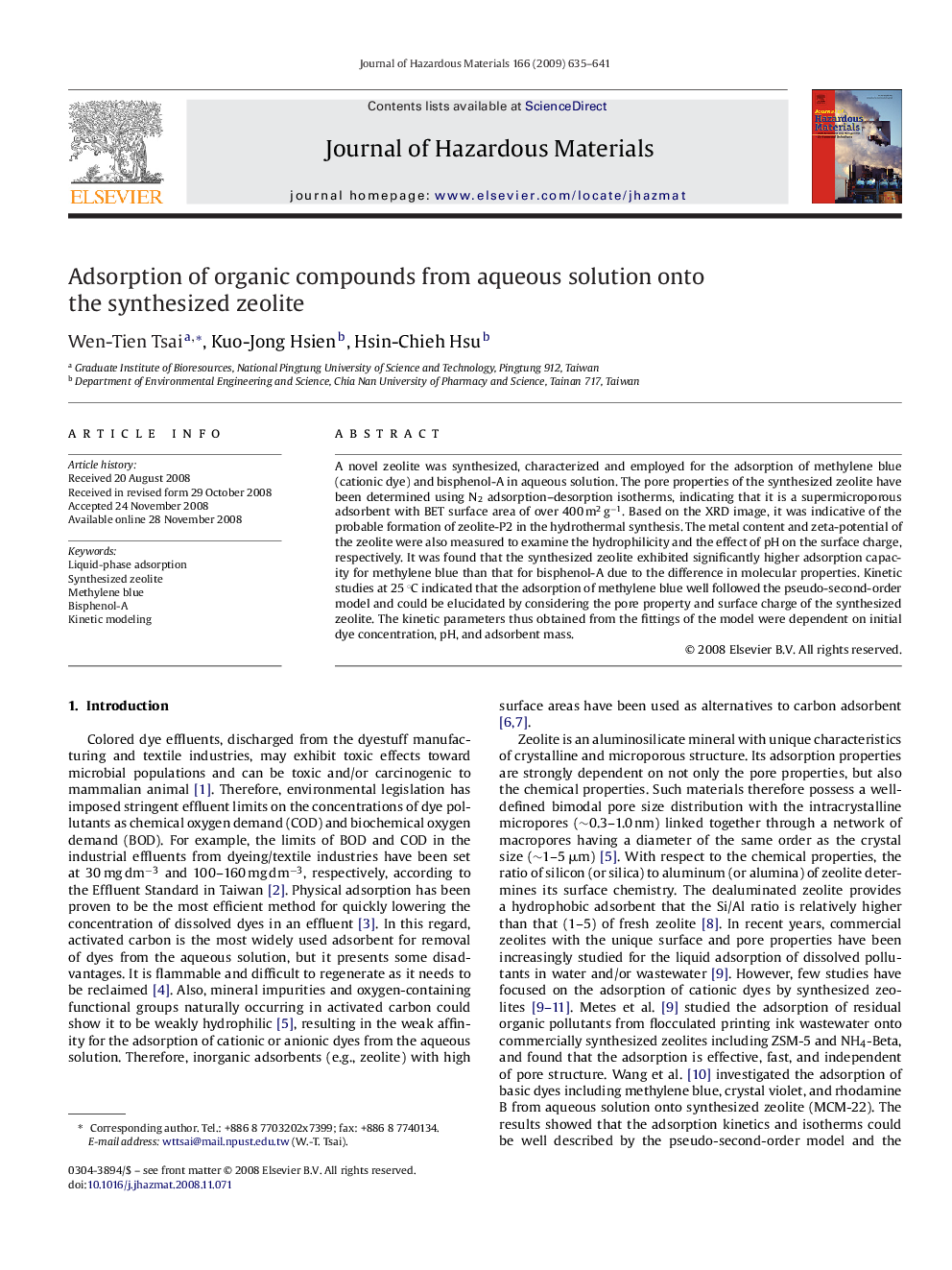| Article ID | Journal | Published Year | Pages | File Type |
|---|---|---|---|---|
| 581990 | Journal of Hazardous Materials | 2009 | 7 Pages |
Abstract
A novel zeolite was synthesized, characterized and employed for the adsorption of methylene blue (cationic dye) and bisphenol-A in aqueous solution. The pore properties of the synthesized zeolite have been determined using N2 adsorption-desorption isotherms, indicating that it is a supermicroporous adsorbent with BET surface area of over 400 m2 gâ1. Based on the XRD image, it was indicative of the probable formation of zeolite-P2 in the hydrothermal synthesis. The metal content and zeta-potential of the zeolite were also measured to examine the hydrophilicity and the effect of pH on the surface charge, respectively. It was found that the synthesized zeolite exhibited significantly higher adsorption capacity for methylene blue than that for bisphenol-A due to the difference in molecular properties. Kinetic studies at 25 °C indicated that the adsorption of methylene blue well followed the pseudo-second-order model and could be elucidated by considering the pore property and surface charge of the synthesized zeolite. The kinetic parameters thus obtained from the fittings of the model were dependent on initial dye concentration, pH, and adsorbent mass.
Related Topics
Physical Sciences and Engineering
Chemical Engineering
Chemical Health and Safety
Authors
Wen-Tien Tsai, Kuo-Jong Hsien, Hsin-Chieh Hsu,
